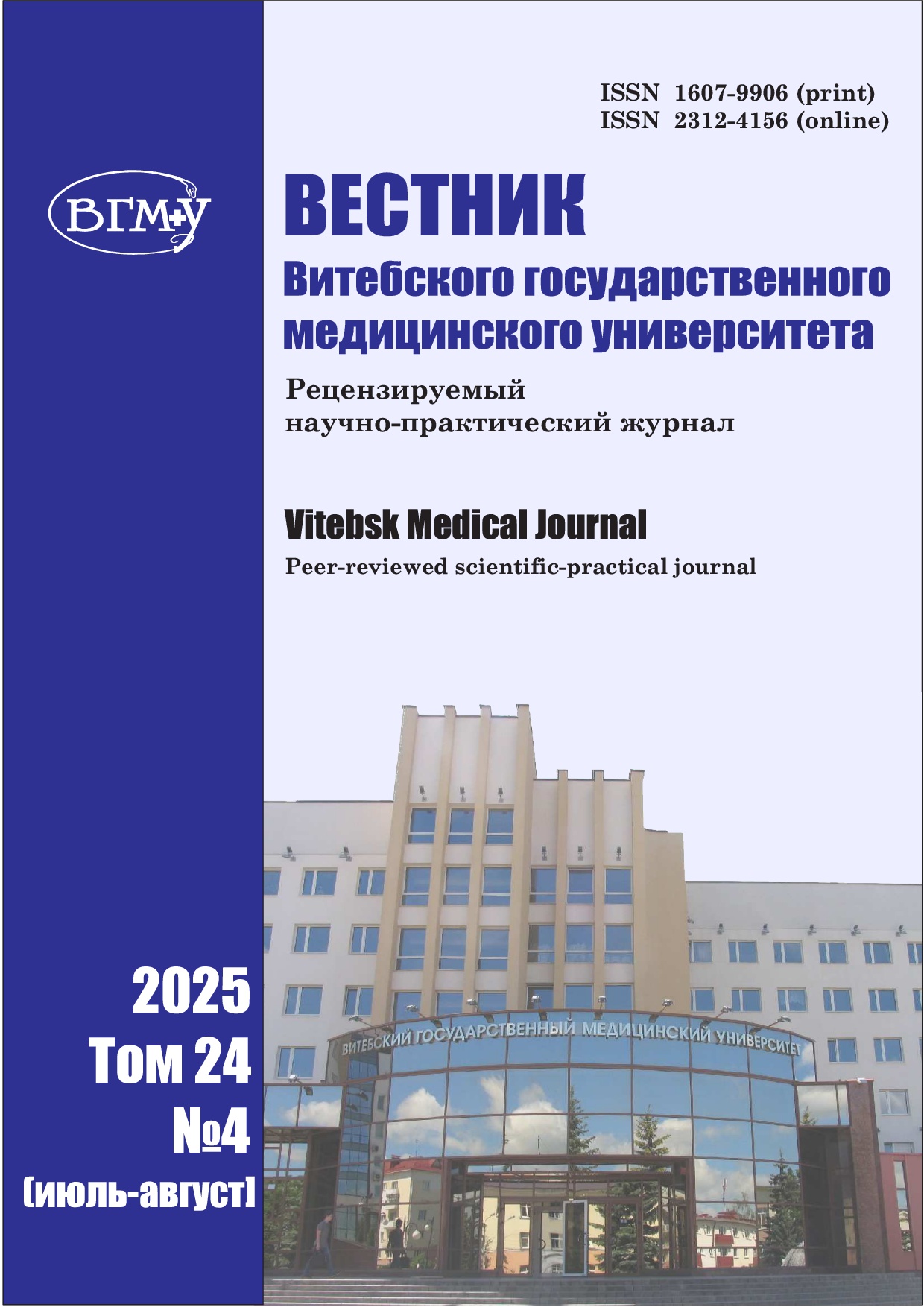Метод лечения нозокомиального синусита у пациентов отделений реанимации и интенсивной терапии
Аннотация
Резюме.
Клиническая значимость нозокомиального синусита (НС) состоит в его связи с увеличением инфекционных осложнений, таких как вентилятор-ассоциированная пневмония (ВАП), синус-тромбоз, сепсис и т.д. Ввиду затруднённого оттока содержимого околоносовых пазух и высокой антибиотикорезистентности возбудителей НС, применение местных методов лечения (дренирования) является актуальным.
Цель работы – разработать эффективный способ дренирования верхнечелюстных пазух (ВЧП) при НС у пациентов отделений реанимации и интенсивной терапии (ОРИТ).
Материал и методы. Выполнено открытое проспективное нерандомизированное исследование. Пациенты находились в ОРИТ и были разделены на 2 группы: 1 группа – 28 человек c НС, находящихся на искусственной вентиляции лёгких (ИВЛ) и пролеченных по разработанной нами методике; 2 группа – 26 пациентов, у которых лечение НС проводилось стандартным методом (пункции ВЧП).
Результаты. При сравнении двух групп было установлено достоверно меньшее суммарно затраченное время при санации ВЧП (количество процедур n=2) у пациентов 1 группы (pMann–WhitneyUtest<0,05). Также при повторных манипуляциях по санации ВЧП у пациентов 1 группы отсутствовала болевая реакция от проводимой процедуры и необходимость применения местных анестетиков. Кровотечение из носовой полости при проведении манипуляций у пациентов 1 группы наблюдались в 2 случаях, в то время как во 2 группе – у 8.
Заключение. разработанный метод дренирования ВЧП, включающий установку в полость ВЧП двухпросветного катетера с последующими ежедневными промываниями пазухи раствором хлоргексидина биглюконата 0,05% является более эффективным и безопасным как по затраченному времени на процедуру (pMann–Whitney U test<0,05), так и по числу кровотечений (p=0,0255), в сравнении со стандартным методом пункции ВЧП.
Литература
Arens, J. F. Maxillary sinusitis, a complication of nasotracheal intubation / J. F. Arens, F. E. Lejeune, D. R. Webre // Anesthesiology. 1974 Apr. Vol. 40, № 4. P. 415–416. doi:10.1097/00000542-197404000-00024
Caplan, E. S. Nosocomial sinusitis / E. S. Caplan, N. Hoyt // JAMA. 1982 Feb. Vol. 247, № 5. P. 639–641.
Щелкунов, Д. С. Методика лечения нозокомиальных синуситов у пациентов нейрохирургического профиля / Д. С. Щелкунов, В. М. Семёнов, К. М. Кубраков // Оториноларингология. Восточная Европа. 2023. Т. 13, № 2, электрон. прил. URL: https://recipe.by/wp-content/uploads/woocommerce_uploads/2023/06/Tezisy_Prilozhenie-k-Otorino_2-2023.pdf (дата обращения: 14.08.2024).
Risk factors and clinicalrelevanceof nosocomial maxillary sinusitis in the critically ill / J. J. Rouby, P. Laurent, M. Gosnach [et al.] // American journal of respiratory and critical care medicine. 1994 Sep. Vol. 150, № 3. P. 776–783. doi:10.1164/ajrccm.150.3.8087352
Influence of long-termoroornasotracheal intubation on nosocomial maxillary sinusitis and pneumonia:results of a prospective, randomized, clinicaltrial / L. Holzapfel, S. Chevret, G. Madinier [et al.] // Critical care medicine. 1993 Aug. Vol. 21, № 8. P. 1132–1138. doi:10.1097/00003246-199308000-00010
Paranasal sinusitis associated with nasotracheal intubation: a frequently unrecognized and treatable source of sepsis / C. S. Deutschman, P. Wilton, J. Sinow [et al.] // Critical care medicine. 1986 Feb. Vol. 14, № 2. P. 111–114.
Heffner, J. E. Nosocomial sinusitis. Den of multiresistant thieves? / J. E. Heffner // American journal of respiratory and critical care medicine. 1994 Sep. Vol. 150, № 3. P. 608–609. doi:10.1164/ajrccm.150.3
Geiss, N. K. Nosocomial sinusitis / N. K. Geiss // Intensive care medicine. 1999 Oct. Vol. 25, № 10. P. 1037–1039. doi:10.1007/s001340051009
Лазарева, Л. А. Диагностический алгоритм и лечебная тактика при нозокомиальных риносинуситах в отделении реанимации и интенсивной терапии крупного многопрофильного стационара / Л. А. Лазарева, С. А. Сайдулаев, Р. В. Резников // Российская оториноларингология. 2013. Т. 64, № 3. С. 104–109.
Оториноларингология. Национальное руководство / под ред. В. Т. Пальчуна. Москва : ГЭОТАР-Медиа, 2008. 261 с.
Полезная модель RU 144275 U1, МПК A61B 17/00 (2006.01). Игла для пункции верхнечелюстной пазухи Мирошниченко-Степанова : № 2014112112/14 : заявлено 28.03.2014 : опубл. 20.08.2014 / Мирошниченко А. П., Степанов Е. Н. ; заявитель Самар. гос. мед. ун-т // Изобретения. Полезные модели. 2014. № 23.
Полезная модель RU 2786328 С1, МПК A61B 17/24 (2006.01), A61B 17/34 (2006.01), A61M 25/00 (2006.01). Устройство и способ дренирования верхнечелюстной пазухи : № 2022106328 : заявлено 11.03.2022 : опубл. 20.12.2022 / Крюков А. И., Алексанян Т. А., Товмасян А. С., Левина С. В., Аглиуллин Т. А., Болгар А. Я., Кишиневский А. Е., Аглиуллин А. Ф. ; заявитель Науч.-исслед. клин. ин-т оториноларингологии им. Л. И. Свержевского // Изобретения. Полезные модели. 2022. № 35.
Патент BY 13322, A 61B 17/24 (2006.01), A 61K 17/34 (2006.01), A 61M 25/00 (2006.01). Антральный дилятатор : № u 20230081 ; заявлено 14.04.2023 ; опубл. 30.10.2023 / Щелкунов Д. С., Семенов В. М., Кубраков К. М., Корнилов А. В. ; заявитель Витеб. гос. мед. ун-т. 4 с.

 УО "Витебский государственный ордена Дружбы народов медицинский университет"
УО "Витебский государственный ордена Дружбы народов медицинский университет"